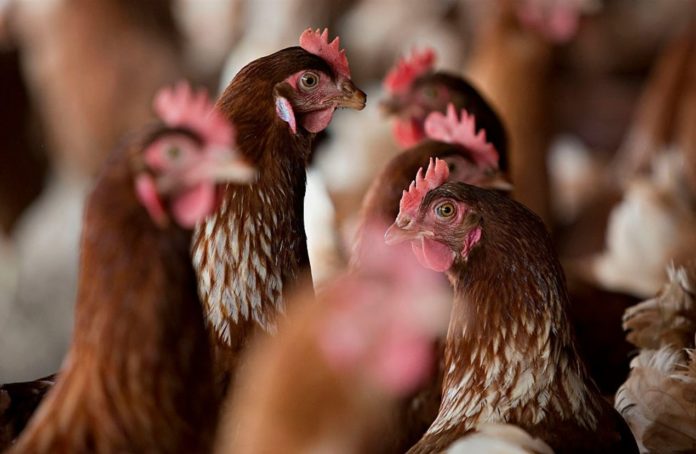The US Department of Agriculture (USDA) revealed on Wednesday that a highly virulent strain of avian flu was found in a commercial turkey flock in Dubois County, Indiana. According to Reuters, state officials said that 29,000 turkeys have been slaughtered to prevent the infection from spreading.
Avian influenza, sometimes known as bird flu, can affect poultry such as chickens and turkeys, as well as free-flying waterfowl such as ducks, geese, and shorebirds, says the USDA. According to the Des Moines Register, the highly virulent strain reported in Indiana turkeys is known as H5N1. It was initially discovered in wild bird populations in North and South Carolina last month. Around the same time, wild birds in eastern Canada tested positive for the virus, according to MPR News.
Then, according to the IndyStar, on Monday, an Indiana farmer discovered roughly 100 dead turkeys in one of his barns and noticed that the remaining turkeys were lethargic. The farmer sought the assistance of a veterinarian to take samples from the birds, which were then processed at Purdue University’s Indiana Animal Disease Diagnostic Laboratory and confirmed at the USDA’s Animal and Plant Health Inspection Service (APHIS) National Veterinary Services Laboratories in Ames, Iowa. The results of these tests revealed that the birds had died as a result of highly virulent avian influenza (HPAI).
“This is the first confirmed case of HPAI in commercial poultry in the United States since 2020,” the USDA statement reads. It’s also the first occurrence of H5N1 influenza in commercial poultry in Indiana since 2016. More than a dozen commercial flocks in Indiana were afflicted during the 2016 outbreak, with upwards of 400,000 birds slaughtered.
According to sources, state officials quickly imposed a quarantine on the contaminated property and all farms within a 6.2-mile (10-kilometer) radius. According to spokesperson for the Indiana State Board of Animal Health, the quarantine has affected 18 businesses in all, affecting hundreds of thousands of birds. Farms in the quarantine zone must test their birds for avian flu at least once a week; according to Derrer Spears, no more cases have been discovered outside the original site.
This strain of avian influenza is concerning since people have contracted the virus on rare instances “after direct or close contact with sick or dead poultry that were infected with the virus,” according to the Centers for Disease Control and Prevention (CDC). H5N1 can cause serious respiratory illnesses in humans, such as pneumonia and respiratory failure, as well as death in some cases. It is difficult to spread between humans.
Last month, a man who was living with 160 ducks in the UK was quarantined after being found infected with the deadly new variant of bird flu. All of the animals had to be culled, including the 20 that lived in his home.
Last year, a bird flu outbreak in northern Israel killed at least 5,200 migratory cranes and caused farmers to butcher hundreds of thousands of chickens as authorities struggle to contain the country’s greatest wildlife disaster in its history.
“This time the situation is more difficult and more risky because we see more variants emerge, which make them harder to follow,” said Monique Eloit, OIE Director-General at that time.
“Eventually the risk is that it mutates or that it mixes with a human flu virus that can be transmitted between humans then suddenly it takes on a new dimension,” she further added.
In terms of the current outbreak in the United States, “avian influenza does not present an immediate public health concern. No human cases of these avian influenza viruses have been detected in the United States,” the USDA adds. According to the announcement, no birds from the endangered Indiana flock would enter the food supply.
According to the USDA, “as a reminder, proper handling and cooking of poultry and eggs to an internal temperature of 165 F [73.8 degrees Celsius] kills bacteria and viruses,” so safe food handling techniques would be sufficient to eradicate the H5N1 virus.
Image Credit: Getty
You were reading: After Asia and Europe, a deadly variant of bird flu hits US farm: what you can do
